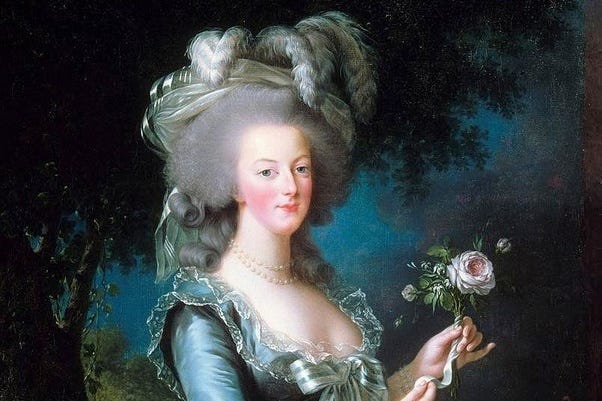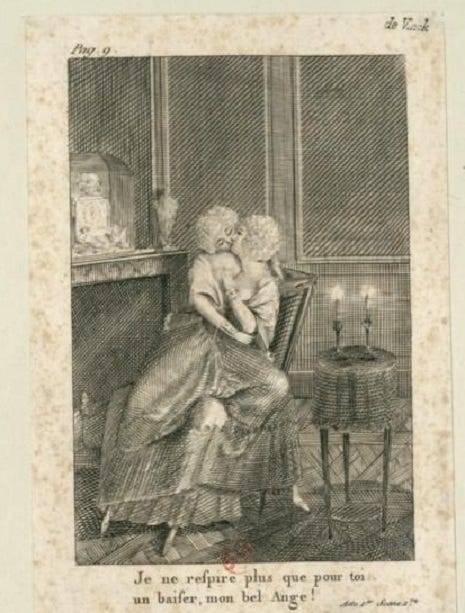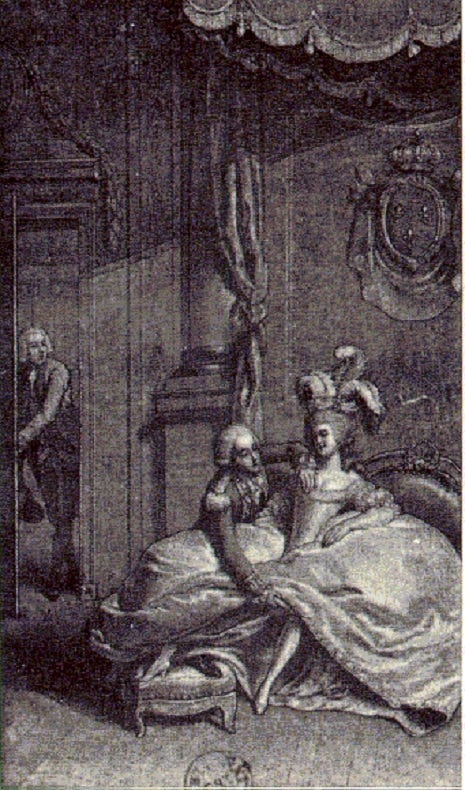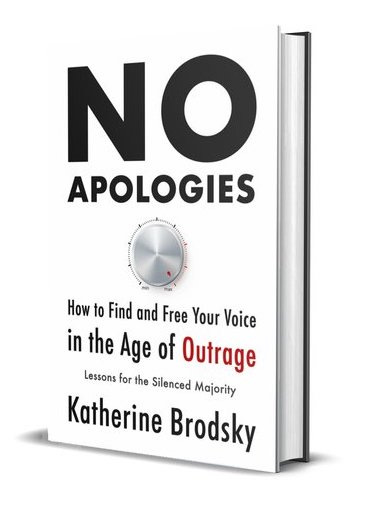The "Cancelling" of Marie Antoinette
When we conjure up images of Marie Antoinette, it tends to be of great opulence. Lavish dresses, extravagant parties, and so on. And, of course, she’s quite well known for uttering the phrase, “Let them eat cake!” as the peasants struggled to make ends meet. By the time of the French revolution, there wasn’t much of a sense of pity towards her. More so, livid hatred.
Except, much of what was said about Marie Antoinette was not true. She was, one could argue, a historic victim of “cancel culture” as well as an elaborate disinformation campaign against her. There’s much we can learn from the tactics of yesteryear that still apply today.
But let’s first debunk the claim lodged against her most often: She never said “let them eat cake.” In fact, this line first appeared 50 years after her death. Of course attributing false or out-of-context quotes to famous people is rather commonplace today too.
She was also not nearly as inclined to splurge as it has often been suggested.
As an Austrian who found herself as the Queen of France, she was an outsider. She was not looked on fondly from the start due to her foreign status. And there were those who were keen on flaming the fire that would lead to a revolution. Turning the people against her was a useful tactic.
So they set out to build a caricature of a Queen who was self-indulgent while her people starved. A Queen who has no moral boundaries.
She was not merely accused of greed and debauchery, but also of having affairs, and, worse of all…she was accused of incest. Despite most of the charges against her being false, they were repeated enough that they stuck in the minds of the French populace. Sound familiar? Even years later in our own popular culture she’s often used to portray an archetype of extreme wealth and privilege. This despite much historical evidence that suggests that she was actually a fairly modest monarch for her time and status, though not initially. At first she did spend more extravagantly and was known for gambling. This grain of truth gave the accusations against her legitimacy, but what was failed to be included was that as she matured (she was married off at age 14!) and had children this has changed.
In fact, she curtailed excess fashion spending and often would re-use her dresses by having them altered, instead of buying a whole new wardrobe each season as was then common. She also prefered to spend her time in more modest dwellings outside of the court.
She was certainly not more extravagant than royalty before her and by the time she turned 30, a case could be made that she was even significantly less so. But the gossip persisted.
She didn’t seem so oblivious towards the suffering of France’s poor either, donating generously to charitable causes.
But wasn’t getting many breaks.
In an incident referred to as the “Affair of the Queen’s Necklace,” she was falsely accused of a crime to defraud the Crown’s jewellers by refusing to pay for a very expensive diamond necklace that she supposedly acquired. In truth, she rejected buying the necklace, but her signature was forged by Jeanne de Valois-Saint-Rémy, a “notorious French adventuress and thief.” Even though the truth was eventually reveal and the forger was convicted, in the minds of the public, she was still viewed as guilty.
Just as today, once an accusation travels widely enough, even when the truth is established or someone is found not guilty, few find out the actual verdict, but many remember the crime.
Of course, this was all paving the way for the French Revolution and she was a perfect scapegoat.
The slander didn’t stop there.
Perhaps in some ways equivalent to today’s “meme culture,” though more destructive, false, disgusting, and pornographic cartoon depictions of Antoinette were spread to tarnish her image.
She was depicted as having engaged in lesbian trysts:
Because her marriage to her husband was not consummated for seven years due to his reluctance—something that…somehow…became well-known and she was blamed for, by the time she had a child, rumors flew that it was illegitimate.
Here’s another lewd portrayal of her with what is suggested be her lover, General Lafayette.
She was called l’Autrichienne (‘the Austrian bitch’) in the “gutter press” and she was accused of adultery, cuckoldry, masturbation and incest. She was also accused of organizing orgies in Versailles, engaging in lesbian sex with her ladies-in-waiting, and having affairs with soldiers of lower rank.
Here she is portrayed with the king’s younger brother, the Count d’Artois, with the king looking on:
Tabloid smut was essentially weaponized for a class war.
She was, of course, also accused of “dual loyalties” since she was Austrian and various rumors about her manipulating the king, spying for Austria, stealing funds for Austria, and plotting against France were spread.
On August 10, 1792, thousands of Parisians attacked the Tuileries palace. That was the end of the monarchy’s rule. The royal family was essentially held prisoners for 14 months. The king was executed. Antoinette was eventually moved to a dungeon and separated from her children. She was under male guard 24/7, even while going to the bathroom.
On October 14, 1793, she was presented for trial before the Revolutionary Tribunal on charges ranging from political treachery to orchestrating massacres, sexual promiscuity, to incest with her 8-year-old son.
It was, of course, a sham trial. The verdict was predetermined.
When the incest charge was brought up, on the signed “confession” from her young son, she indignantly replied:
"I remain, sir, silent on that subject, because nature holds all such crimes in abhorrence," and then turning with an animated air to the people, she exclaimed," I appeal to all mothers who are present in this auditory—is such a crime possible?"
That particular charge appears to have been ultimately dropped.
She was soon condemned “as guilty of having been accessary to, and having cooperated in different manoevures against the liberty of France; of having entertained a correspondence with the enemies of the republic; of hav∣ing participated in a plot tending to kindle civil war in the interior of the republic and 〈…〉against each other.”
She cast down her eyes, where they remained for the rest of the proceeding.
She was beheaded by guillotine a few days later, on October 16.
Her beheading was followed by a slew of joyful execution ballads known as “complaintes” in French recounting her alleged crimes, further tarnishing her reputation even beyond her death.
One song claimed that she was a ‘woman in fury’, a murderous plotter who dreamed of ‘Swimming in the blood of the French’. ‘We should all, by your works,/ Perish one after the other, our throats slit’, shrieks one song. Another asks ‘How many innocent victims have you made perish?’.
"She was not a guilty woman, neither was she a saint; she was an upright, charming woman, a little frivolous, somewhat impulsive, but always pure; she was a queen, at times ardent in her fancies for her favourites and thoughtless in her policy, but proud and full of energy; a thorough woman in her winsome ways and tenderness of heart, until she became a martyr."
— Historian M. de la Rocheterie
In Antoinette’s case, the smears and campaign against her didn’t merely result in ostracization and loss of reputation and livelihood. No, this cancel culture campaign resulted in the loss of her very life—not to mention helping pave the path to a violent revolution.
There may be a lesson here for us all on how narratives are invented, manipulated and used as tools for political agendas, as well as how easily persuaded the general public can be by lies when they align with their existing biases and prejudices. The damage to reputation is long-lasting and the more you repeat something, the more it is accepted as fact.
It is critical for us to approach scandalous claims with skepticism and seek out more information before forming an opinion, let alone resorting to public shaming. We should also seek to understand the motives behind claims. Sometimes things go “viral” for a reason and, as we see with things like bot farms, certain narratives are amplified on purpose.
Things will only get more difficult with AI and deep fakes being increasingly weaponized against our understanding of reality.
As we see with Marie Antoinette’s story, disinformation campaigns and cancel culture are nothing new—we just have more tools for it now. But, likewise, we have more tools to look for the truth with…so long as we choose to do that.
☕️ By popular request, you can also support my work by making a one-off donation via Buy Me a Coffee.
Order my book, No Apologies: How to Find and Free Your Voice in the Age of Outrage―Lessons for the Silenced Majority —speaking up today is more important than ever.
NOTE TO READERS:
Thank you for keeping me company. Although I try to make many posts public and available for free access, to ensure sustainability and future growth—if you can—please consider becoming a paid subscriber. In addition to supporting my work, it will also give you access to an archive of member-only posts. And if you’re already a paid subscriber, THANK YOU!









Great post! I love that it uses a historical figure to illustrate how human behavior, unfortunately, doesn’t change.
But, we can try to be better
I'm in the midst of reading Hilary Mantel's Cromwell trilogy, and I'm reminded by your post of the cancellation and execution of Anne Boleyn.